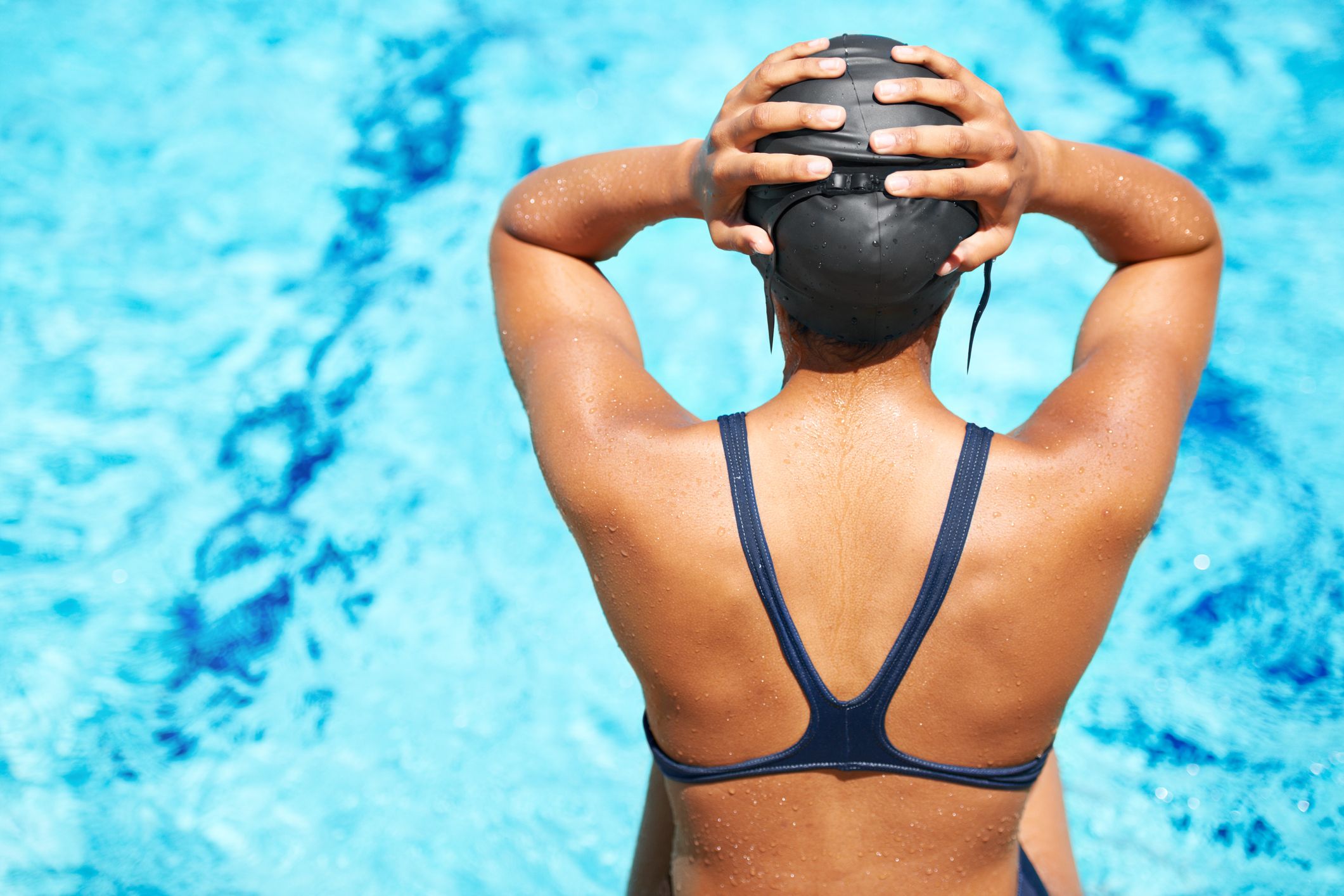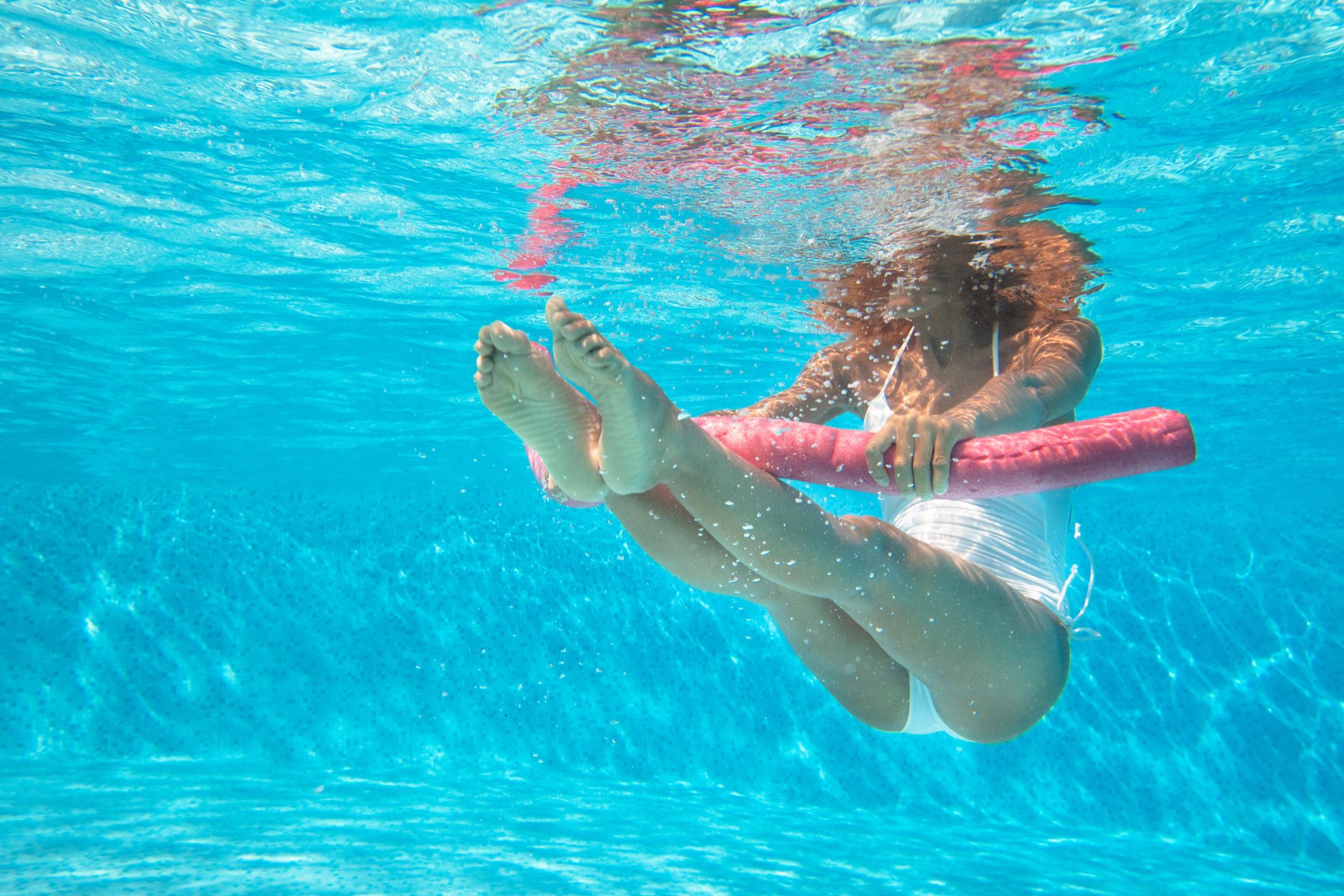Knowing that I was born and raised in Florida, you may be surprised to hear that open water swimming scares me. But another thing to know about me is that I typically make myself embrace(or at least try) the things that scare me, be that moving to New York City at 18 years old, running a marathon in Tokyo, or, yes, swimming in the ocean.
My first attempt at open water swimming was the day before my first triathlon several years ago—and my number one tip is to not wait until 24 hours before your first triathlon to get in the ocean. Luckily, it was a sprint triathlon and the already “measly” half-mile swim was further truncated due to weather. Still, I basically doggy paddled my way across the ocean at Sandy Hook in New Jersey and it never felt so good to peel off my wetsuit and jump on a bike.
Anyway, since then, I’ve moved to the Jersey Shore and am still pretty weary of the body of water that sits a mere 10-minute walk from my front door. So, I reached out to Dan Daly, CSCS, owner of Train Daly and competitive open water swimmer and coach, for some advice. (FYI, he has swam around the island of Manhattan—the entire island!)
Turns out, I’m not alone in wanting to start open water swimming: “Increasingly, more people are taking to the open water,” Daly says. In part, he notes, the uptick in interest could be due to pools being closed during the pandemic in addition to growing awareness around the benefits of cold water exposure.
Here, everything you need to know about the pursuit, from the necessary gear to managing anxiety and beyond.
Gear Up Right
Goggles:
The first tip that surprised me is that you actually need two pairs of goggles—a light-colored pair and tinted pair. “Brighter colors can help illuminate visibility on overcast days, and tinted ones help shield the sun,” Daly says. “Many open water swimmers favor goggle with a larger field of view and comfortable rubber gaskets over the low-profile goggles worn by competitive pool sprinters,” he adds. Daly recommends picks from The Magic 5, Roka, and Zone3.
Pro Tip: Add a small dab of baby shampoo to the inside of your goggles before putting them on for anti-fogging, long after the new goggle coating wears off, Daly says.
Cap & Ear Plugs:
Next, you may want a cap and ear plugs if you’re swimming in cooler water. Daly recommends a silicone cap which is slightly warmer than latex. As for ear plugs, try silicone waterproof ones from Hearprotek that have a small hole that allows for better hearing and less balance/equilibrium disruption.
Wetsuit:
Even if it’s not cold, a wetsuit can provide a little extra buoyancy and make you feel more confident in the water. (This I learned myself during that triathlon, and luckily the suit still fits!) Daly suggests a suit from a triathlon or open water brand, like Roka, Orca, and Zone3.
Pro tip: “Apply Body Glide to areas close to seams or common chaffing points, like the neck, and armpits,” he notes. And of course: “Use a waterproof sport sunscreen for any exposed areas.”
Buoy:
Finally, a bright-colored float or tow (like from New Wave or Kiefer) attached to your waist functions as a safety measure (so you’re visible out there) and sometimes includes a dry pouch for storing valuables and light nutrition.

Follow These Safety Rules
Daly cites these as non-negotiables.
Consider Hiring A Professional Coach
Just like you might hire a trainer in the gym, a swimming coach can be game-changing for beginners who are serious about picking up the sport. “Open water swimming often skews towards longer distances so inefficient technique can really compound over the course of miles, and reinforce bad habits,” Daly says. A coach can video your stroke and programa plan that addresses technique and fitness. A pro can also teach skills like sighting, which helps you swim in a straighter line.
https://www.instagram.com/p/CL5bgv6gOuc/
A post shared by Dan Daly, CSCS, SFG, PN2, FMS2 (@dandaly)
Don’t Skip The Warm Up
Dryland swim warm-ups could include shoulder mobility drills, dryland cord shoulder exercises, breath work (see below), and plyometrics, all of which have been shown to increase performance, per Daly.
https://www.instagram.com/p/CNBerTTBwmn/
A post shared by Dan Daly, CSCS, SFG, PN2, FMS2 (@dandaly)
Next, you should include some light swimming before getting into any drills or intervals.
Just Dive In
“Like anything else, the more time spent developing these skills intently, the better the improvement,” Daly says. “Pool training can be a great supplement for open water, particularly if it’s harder to get to, but ultimately, the open water is the most specific way to develop open water swimming.”
He recommends trying to get in the open water at least weekly, ideally twice. It’s important to start at your fitness level, even if that means just a 10-minute swim. To put things in perspective, recreational swimmers may build to seven hour-long sessions per week and competitive swimmers may train up to eight sessions per week at 20+ hours.
Manage Your Anxiety Out Of The Water
Unfortunately, I’m not alone in my fear of the water. “Cold, depth, darkness, and the vastness of open water can be overwhelming,” says Daly. (Well put.) Luckily, easing into the water, and gradually increasing exposure to cooler waters or challenging conditions can improve your tolerance for unpredictable situations, Daly notes.
What’s more, breathing exercises or meditation on land, in training, and prior to getting in the water can help, too. “These practices improve your ability to manage breath when a fight or flight reaction becomes overwhelming, and breathing becomes panicked,” Daly says. That means my daily Transcendental Meditation practice is already helping—phew!
Manage Anxiety *In* The Water
If you feel a mid-swim panic coming on, try this: “Roll onto your back, head and chest up towards the sky, and take some deep breaths while you float or tread and regroup,” Daly says.

Hit The Gym
“The best swimmers know to get faster, and reduce the likelihood of injury, they need to strength and power train,” Daly says. He recommends moves like deadlifts, squats, push-ups, and pull-ups (or other moves that work those patterns). The pulling exercises in particular are super important since you’ll use the muscles to help with propulsion in the water. You can also incorporate swimming-specific patterns, like pulling and positional exercises using bands with paddles, and other equipment that simulates the swim.
Source: Read Full Article
